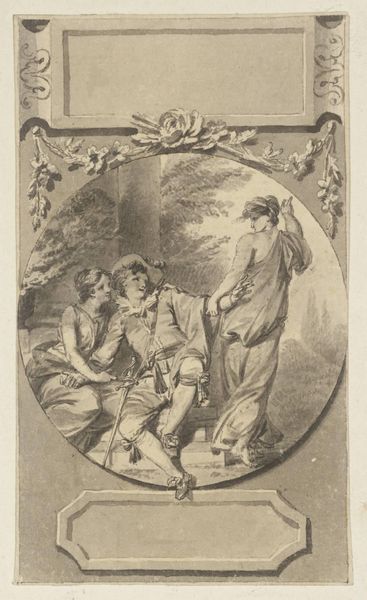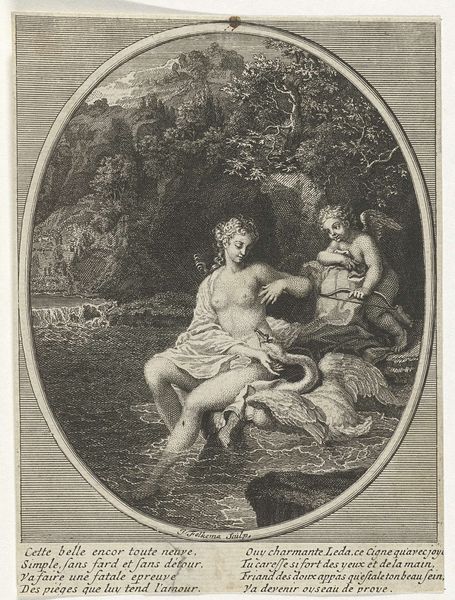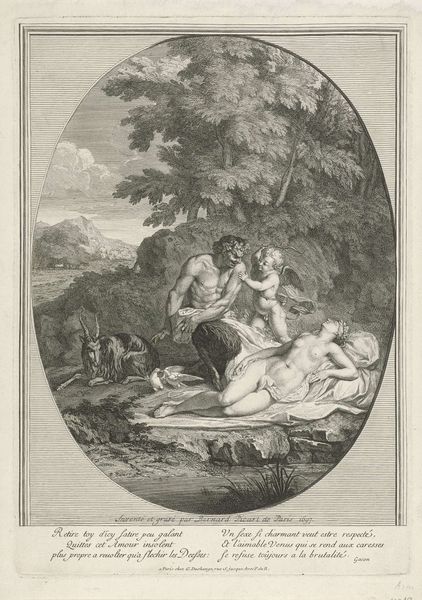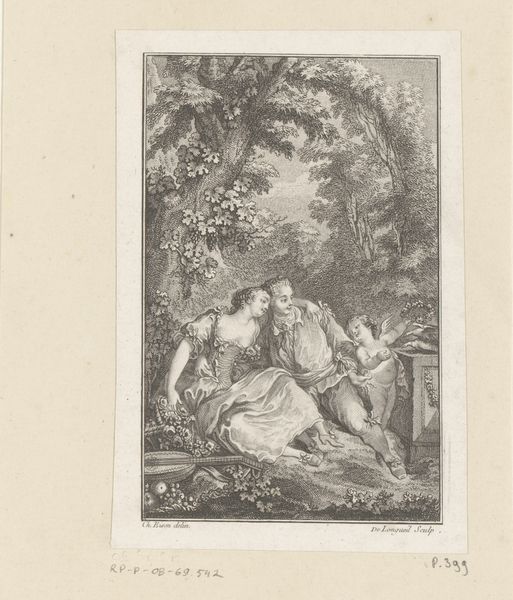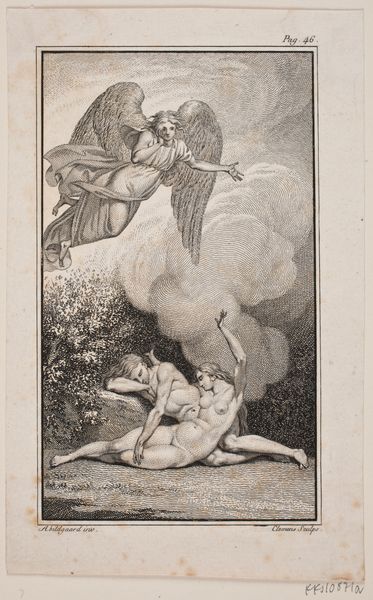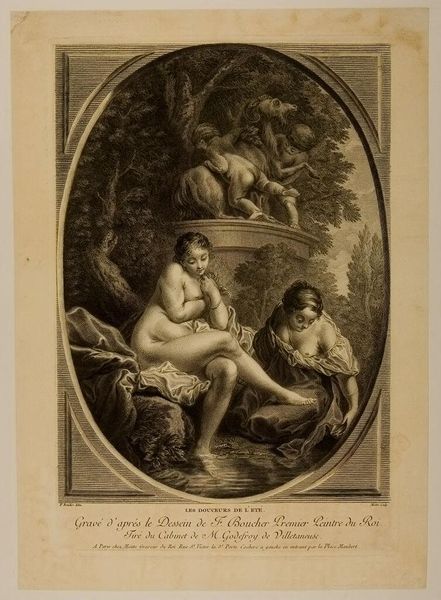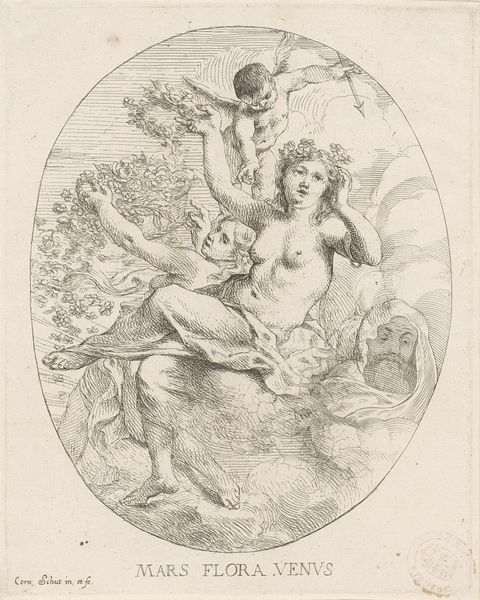
drawing, pen, pastel
#
drawing
#
landscape
#
figuration
#
coloured pencil
#
pen
#
pastel
#
watercolor
#
rococo
Dimensions: height 319 mm, width 235 mm
Copyright: Rijks Museum: Open Domain
Editor: This is "Bacchanaal met nimf en putti bij bomen," made sometime between 1732 and 1776 by Gilles Demarteau, using pen, pastel, colored pencil, drawing and watercolor. It has a relaxed feeling, like a summer afternoon, but I’m intrigued by its materiality and what appears to be the mass reproduction via engraving. What do you make of this scene? Curator: Well, I see a fascinating glimpse into the art market and production of the Rococo era. Notice the delicate rendering, characteristic of pastel and watercolor, then consider how Demarteau’s work existed largely as engravings. It’s highly probable this drawing served as a model for printmaking. Editor: So, this wasn’t necessarily intended as a final artwork? Curator: Exactly. The labor here is geared towards reproduction, reaching a wider audience beyond the wealthy elite. Look closely at the nymph and putti. They exist within this fantasy landscape, yet they’re also commodities, replicated and consumed. Think about the socio-economic context: burgeoning middle class with access to art, facilitated by printmaking. Do you see how this affects our understanding of the piece? Editor: I do. The process of reproduction democratizes art but also changes its value. It moves away from the unique object toward mass production. The drawing isn't precious on its own; its value resides in the copies it enables. Curator: Precisely. Consider the engraver's skill – a form of craft elevated through artistic application. We must acknowledge the engraver as a skilled artisan involved in this artistic production, not just the artist who created the initial drawing. How does that change your understanding of its creation? Editor: That gives me a better appreciation for all the hands and labor involved in its making. Curator: Exactly. This highlights a system of artistic production, from the artist's initial design to the engraver’s craftsmanship and, finally, the consumption of art. Editor: It’s incredible how focusing on the materials and process opens up new ways of thinking about art in society. Thanks so much. Curator: Indeed! By exploring production, labor and distribution, we can deepen our appreciation for how art exists beyond the surface of the image itself.
Comments
No comments
Be the first to comment and join the conversation on the ultimate creative platform.







